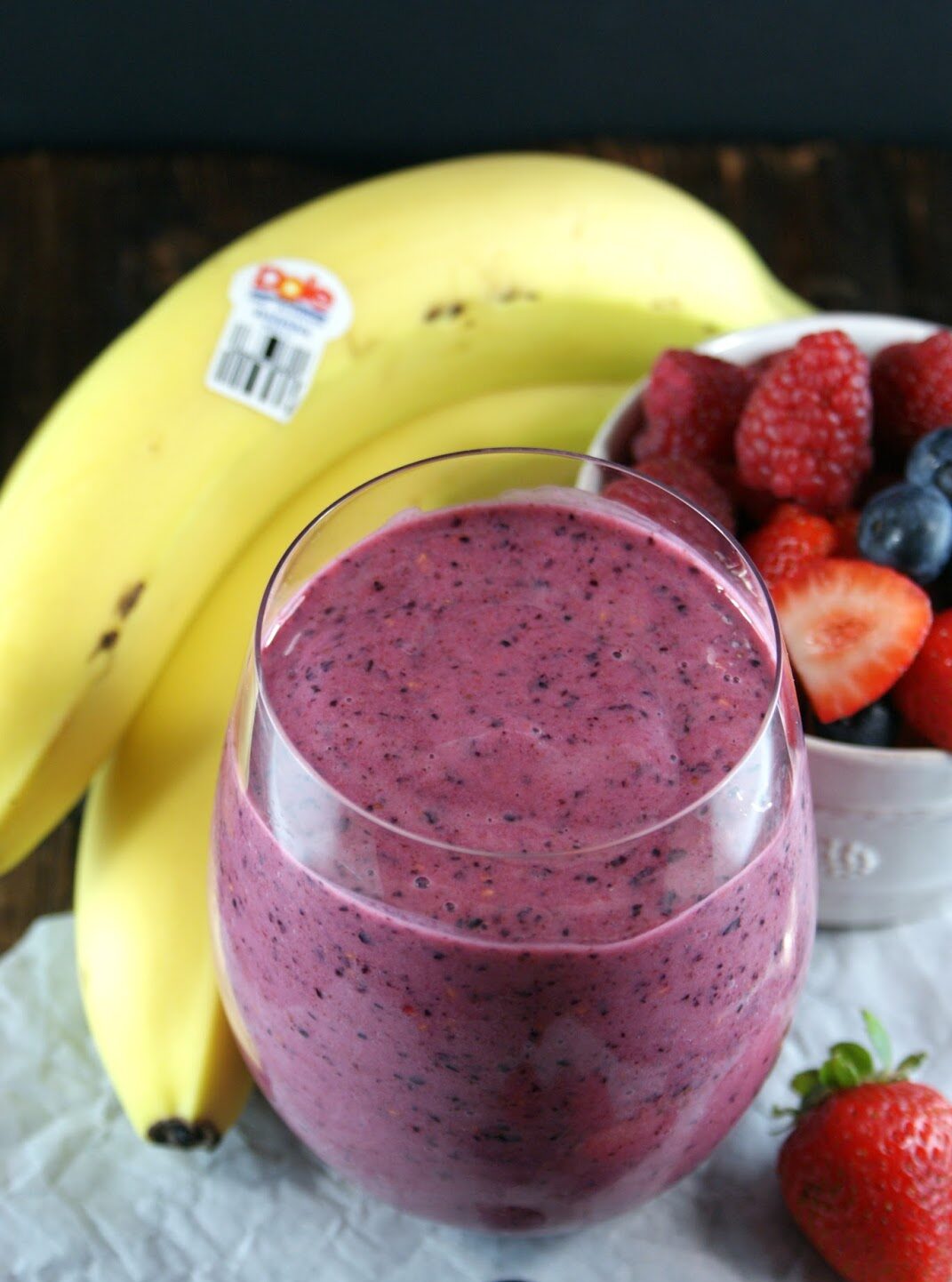Study shows that blending fruits like bananas, which have high PPO enzyme levels, with flavanol-rich berries can reduce the bioavailability of the flavanols.
Published Nov 29, 2023 | 8:00 AM ⚊ Updated Nov 29, 2023 | 12:26 PM

These researchers made a ‘berry’ interesting discovery about bananas in smoothies. (Wikimedia Commons)
Are you a fan of bananas and berry smoothies? Here’s something that might just shake up your smoothie routine!
A study from the University of California, Davis, has some juicy details on how the fruits you blend to create that scrumdiddlyumptious smoothie can impact the health benefits you get.
Let’s start from the top. Ever noticed how bananas turn brown when cut? That’s due to an enzyme called polyphenol oxidase (PPO) and, as it turns out, it’s a bit of a party pooper when it comes to getting those good-for-you flavanols from your smoothie.
Flavanols or flavan-3-ols — a group of bioactive compounds that are found in fruits like apples, berries, pears, cocoa, and grapes — are great for your heart and brain. Flavanols are a subtype of flavonoids, which are compounds found in many plant products that have antioxidant properties.
The study, published in the Royal Society of Chemistry’s journal Food and Function, used smoothies to test how various levels of PPO affect the levels of flavanols being absorbed by the body.
“We sought to understand, on a very practical level, how a common food and food preparation, like a banana-based smoothie, could affect the availability of flavanols to be absorbed after intake,” said lead author Javier Ottaviani, Director of the Core Laboratory of Mars Edge, and an adjunct researcher with the UC Davis Department of Nutrition.
For the study, healthy male adults between 25 and 60 years of age were recruited. Exclusion criteria included a BMI higher than 30, high blood pressure, allergies to peanut or cocoa, a history of heart disease, stroke, gastrointestinal tract disorders, etc, current intake of dietary supplements, persons following a vegan/vegetarian diet, and those adhering to an uncommon diet or a weight loss programme.
In the study, participants sipped on two types of smoothies: One packed with bananas — known for their high levels of the enzyme PPO — and another brimming with a mix of berries — which have lower PPO levels and high flavanoid levels. On a separate day, they also took a flavanol capsule, as a benchmark.
To see the effects, the researchers analysed blood and urine samples to check the participants’ flavanol levels after they consumed the smoothies and the capsule.
Surprisingly, it turned out that when participants drank the smoothies, they had 84 percent less flavanols in their system compared to when they just took the flavanol capsule.
“This highlights how food preparation and combinations can affect the absorption of dietary compounds in foods,” the author said.
The study concluded that the intake of flavanols from a high PPO banana smoothie, but not a low PPO berry smoothie, significantly reduced the levels of flavanols in circulation.
According to nutrition experts, everyone should get between 400 and 600 mg of flavanols per day. People whose diets provide these plant-based compounds regularly are less likely to develop diabetes or cardiovascular complications.
Nutritionist Dr Shweta Adarsh tells South First, “Flavanols, a subclass of flavonoids, are characterised by their 3-Hydroxyflavone backbone structure. These compounds offer a range of medicinal properties, including anti-cancer, antioxidant, anti-inflammatory, and antiviral benefits. Additionally, flavanols possess neuroprotective and cardioprotective qualities.”
Meanwhile, Dr Sudhir Kumar, Consultant Neurologist at Apollo Hospitals in Hyderabad, who is a fitness freak, tells South First that flavanols are associated with many positive health-related benefits. However, most people are unable to get adequate amounts of flavanols daily due to inadequate consumption of fruits and vegetables.
Dr Sudhir says, “Smoothies are commonly accepted and is a convenient means to get adequate amounts of flavanols.”
However, he says that with the new study, it is important to note that some fruits used for smoothie preparation may have a high PPO activity and, hence, potentially affect the bioavailability of flavanols. So choose your ingredients wisely to get the most of your smoothie!
Agreeing with the research, renowned nutritionist Samyuktha Raju, Founder and Head Nutritionist at Nutriment and Revive, tells South First, “Ideally, yes, this is a known fact that when banana or any other fruit rich in polyphenol oxidase is combined with any other fruit or food rich in flavonoids, it can reduce the absorption of flavonoids.”
She adds, “In few athlete or sports-related diets, we give few such combinations for good recovery with respect to macros and vitamins. But it is always better to avoid combining bananas with fruits like berries with low PPO.”
She notes that people avoid the apple and banana combination as well, as apples are rich in flavanols so blending them with bananas (which have a high PPO level) could reduce the bioavailability of flavanols.
Samyuktha suggests including a variety of fruits, vegetables, and beverages like tea in one’s diet which can provide enough flavonoids. She says, “Aim for a diverse, colourful intake to maximise the potential health benefits associated with flavonoids.”
However, Javier Ottaviani, the lead researcher, said that this isn’t a ban on bananas in smoothies. They’re still great!
“But if you’re looking to boost your flavanol intake, you might want to pair those berries with fruits like pineapple, oranges, or mango, or even some yogurt — all of which are low in PPO,” he explained.
And don’t worry, banana fans! They’re still a fantastic choice for a healthy snack or smoothie ingredient. Just maybe not with berries and other flavanol-rich fruits.
